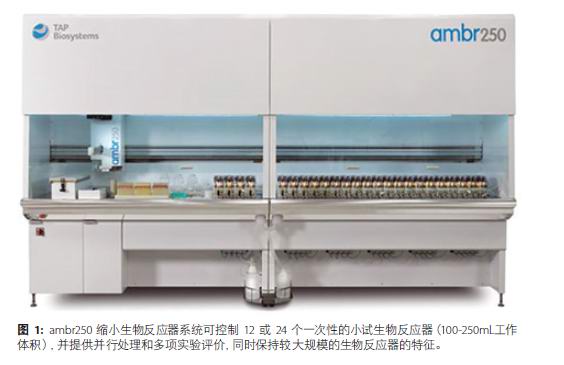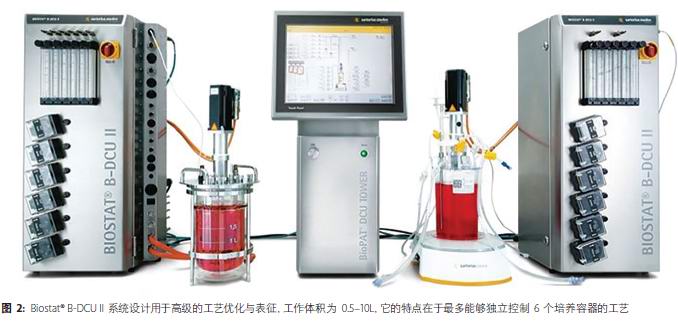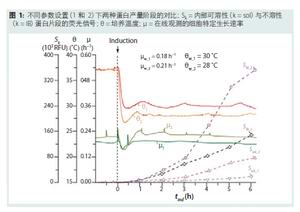Efficient bioprocess development and optimization
Design of Experiments (DOE) is one of the most valuable and efficient methods for organizing, planning, executing, and statistically analyzing experiments. Although DoE results can be obtained by repeating experiments in a single bioreactor, micro-bioreactor systems designed to develop parallel experiments (such as the ambr15 or ambr250 systems) provide more economical conditions for completing DoE. Due to the many interrelated parameters involved in the process development, such as the establishment of cell lines, media screening and optimization of reactor operating parameters, DoE has become an important and indispensable method for obtaining process knowledge. DoE only improves process development efficiency and is also used to assist in determining the production process for high quality products.

Experimental design: effective strategy
In biopharmaceutical processes, reducing development time and reducing production costs are key objectives. In this context, the combination of process analysis technology (PAT) tools and flexible and reliable bioprocess development equipment has become the basis for effectively optimizing existing production processes and developing new processes. The FDA encourages the use of PAT to better understand and control the production process. The statistical-based DoE method is widely used to optimize conditions and obtain optimal process conditions with minimal time and experimentation (1).
The DoE concept synchronizes process parameters based on a series of planned experiments and then illustrates the results through a validated mathematical model. This model can be used for interpretation, prediction, and optimization, and can help to better understand the process. Comparing the single factor experiment of changing one factor at a time, the DoE solution can obtain the optimized result with the least amount of experiment, so the development time can be shortened and the labor input can be reduced.
Optimization of basal and fed-batch media components is critical for optimal growth of recombinant cell lines and synthesis of active drug protein environments (2). Another key goal affecting process development is to optimize basic process parameters such as temperature, pH and dissolved oxygen (3). In general, optimization of media and process parameters is closely related, and DoE is well suited to such tasks (1).

Transfer from culture and feed development to process optimization
In addition to the yield of specific cell lines, the medium has an important influence on the yield and potency of drug proteins and monoclonal antibodies. Cells require large and micronutrient sugar combinations such as sugars, inorganic salts, vitamins, amino acids and other ingredients that support cell growth and protein production. Due to the unique nutritional needs of each cell and the complex composition of the medium, the use of microreactor systems with high-throughput parallel experiments has become a powerful tool to break the bottleneck of process development.
Previous basal and feed medium formulations were determined by extensive empirical testing of factors that changed sequentially (4). Although this method is simple and convenient, it ignores the interaction between the ingredients, may not get the best formula, and is quite time consuming. The best strategy for coping is to use a high-throughput microreactor combined with the DoE design approach to shorten media development time.
In addition to improving the medium component, optimization of the feed control strategy is also advantageous for the flow addition process. The actual method depends on the bioreactor system itself and the cell line. A classic continuous feeding strategy has been proven to be successfully applied to the culture of Escherichia coli and Pichia pastoris. For reasons of simple control and scalability, it is the most common practice in the industry to use a stepwise propulsion method for mammalian cell culture (5, 6).
The new ambr250 workstation with 12 or 24 disposable stirred reactors (TAP Biosystems, one of the Sartorius subsidiaries) is an effective high-throughput scale-down model for microbial fermentation or early cell development. The system's capabilities include continuous real-time monitoring and control of critical parameters, and increased feed sampling options, making it an equivalent but more efficient process amplification than traditional pilot and pilot reactors (7–9) ).
The automated workstation features an integrated liquid handler that removes the lid of the disposable container for initial media loading, inoculation, sampling, and fed-fed. The culture medium or the feed medium may be transferred by a pipetting module, or the medium of different ingredients may be automatically prepared according to the introduced experimental design data system. In addition to a single feed (10 μL to 10 mL), the built-in pump allows for linear or exponential continuous feed, ranging from 20 nL/h to 20 mL/h.
Once the most important media components and their optimal ranges are determined, the process can be transferred to a larger pilot scale system for verification of scalability and continued optimization of operating parameters and process conditions.
The Biostat® B-DCU II benchtop bioreactor (Sartorius Stedim Biotech) is a small test system specifically designed for parallel experiments in six glass reactors or one-time reactors. It is widely used in process optimization and verification in the industry (10). Each reactor has independent control parameters and automatic measurement capabilities. The system is pre-configured for immediate use and they can be used for microbial fermentation or cell culture.

Download full text view:
1. Recombinant protein optimized expression: case study
2. The process leading to success is downloaded immediately
in conclusion
Reduced bioreactor systems for high-throughput cell culture, such as the ambr15 and ambe250 systems, improve the efficiency and effectiveness of screening, as well as process development and process characterization practices. They offer the advantage of performing a large number of experimental operations simultaneously in a small culture volume. At the same time, small-scale disposable stirred tank vessels provide culture environments and bioreactor performance (7–9) that are superior to large-scale bioreactors. Abandoning the traditional method of trial and error optimization, the advanced DoE method is used to quickly and effectively identify key process parameters, resulting in significant cost reduction and substantial reduction in development time.
Download the full text now
Cross-Linked Ha Filler,Cross Linked Hyaluronic Acid Filler,Cross Linked Ha Filler,Cross Linked Hyaluronic Acid Gel
Qingdao Beautiful Skin Biotechnology Co., Ltd , https://www.hafilleresthetic.com